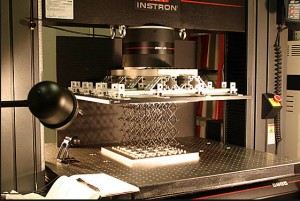Composites and 3-D Printing – A Challenge to the Industry
3D printing, which thirty years ago seemed as distant a dream as deep space travel, has now arrived. Not only is it here but it is moving forward at an incredible rate, with a
multi-material colour printer recently launched and a
carbon fibre printer now on its way. This offers great opportunities for those working with composites, and also great challenges.
carbon fibre printer now on its way. This offers great opportunities for those working with composites, and also great challenges.
Here Comes The Replicator
3D printers provide more than the product-from-thin-air dream of the Star Trek replicator. They allow manufacturers to significantly improve and speed up their processes.
The most obvious benefit of 3D printing is in the production of prototypes. 3D printing isn’t cheap and can’t match other systems for cost effective mass production. But it is well suited to the production of bespoke items such as prototypes. Taking away the need to set up complex machinery or hand craft a new item, it can allow a design to go straight from the computer into physical reality for testing and tool design.
It also allows manufacturers to play with designs traditional machining might find difficult. A 3D food printer
recently demonstrated at CES can produce confectionary in shapes that are almost impossible using traditional methods. It provides one more tool in the chocolatier’s arsenal, and promises similar developments in other fields.
recently demonstrated at CES can produce confectionary in shapes that are almost impossible using traditional methods. It provides one more tool in the chocolatier’s arsenal, and promises similar developments in other fields.
But it’s the shift towards more streamlined manufacturing that is perhaps most promising. 3D printing exhibits many of the principles embedded in the famous Toyota Production System and the lean manufacturing systems that have followed it. It reduces hand-offs from one part of a production line to another, allows instant shifts from producing one product to another on the same line, and can produce in quantities precisely matching customer demand. If the technology can be made more cost effective then it may transform the way we manufacture.
Bigger is Not Better
The potential for lean production by 3D printing offers a challenge to traditional manufacturers. But there’s also a more immediate challenge – the problem of copying.
3D printers are starting to be combined with 3D scanning. This will allow less reputable companies, or individuals without the resources to buy brand name products, to scan objects and print their own copies. The entertainment industry has already been rocked by the challenge of products being copied and distributed by pirates. In the electronic age, large companies start to lose the edge that comes with intellectual property (IP) control. Manufacturing may be about to face the same problems.
Responding To The IP Challenge
There are two ways in which manufacturers can respond to this.
The first is to resist the challenge, fighting legal battles to prevent competitors from copying a design. We can see this approach in the court battles revolving around King, the company behind Candy Crush Saga. It’s a brutal, protracted approach that favours large businesses legally but damages their public image.
The other approach is a more flexible one. Composites manufacturers can accept that sooner or later others will copy their designs and instead concentrate on using skilled craftsmen to produce the most up to the minute items through innovation, flexibility and skilled tooling design. Leaping on the changes made possible by 3D printing, rather than resisting them, is an approach open to all companies, big and small. It doesn’t leave the company’s fate in the hands of outsiders like judges and juries, and it builds a reputation for innovation that will draw in customers.
3D printing is here, and the changes it brings are as irresistible as waves crashing on the shore. So the question for manufacturers is this – will you make the most of the opportunity, or will you sit as futile as King Canute, demanding that the waves leave you alone.

